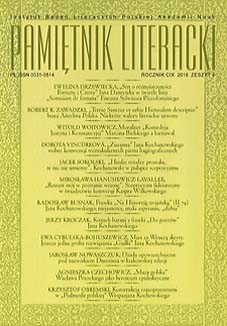Fraszka „Na Historyją trojańską” (II 74) Jana Kochanowskiego: niejasności, znaki zapytania, „dubia”
Jan Kochanowski’s Trifle “Na Historyją trojańską” (“On Trojan History”) (II 74): Ambiguities, Question Marks, Dubious Things
Author(s): Radosław RusnakSubject(s): Studies of Literature
Published by: Instytut Badań Literackich Polskiej Akademii Nauk
Keywords: Jan Kochanowski; Kochanowski’s trifle II 74; “Trojan History”
Summary/Abstract: The paper raises the problem of incommensurability of evaluation of the actions of the mythical Paris from Jan Kochanowski’s trifle (II 74) to the image of this figure presented in the piece that the present epigram commemorates, i.e. an anonymous “Historyja trojańska” (“Trojan History”). While in the trifle the Trojan prince is viewed as a readable exemplum of power which inspires to action–the power with which love influences those who experience it (the thought is expressed in the triffle with the words “dobrze miłować” (“love dearly”)–and puts in a good light even the price of life which his own brothers had to pay for Helen’s kidnapping by Paris, in the text of “Trojan History” he is seen as more severe since here Paris together with Priam are made responsible for the ultimate fall of Troy. The author of the paper sees the reason of the discrepancy both in the psychological sphere and in the specificity of the genre the piece in question represents.
Journal: Pamiętnik Literacki. Czasopismo kwartalne poświęcone historii i krytyce literatury polskiej
- Issue Year: 2018
- Issue No: 4
- Page Range: 111-118
- Page Count: 8
- Language: Polish

